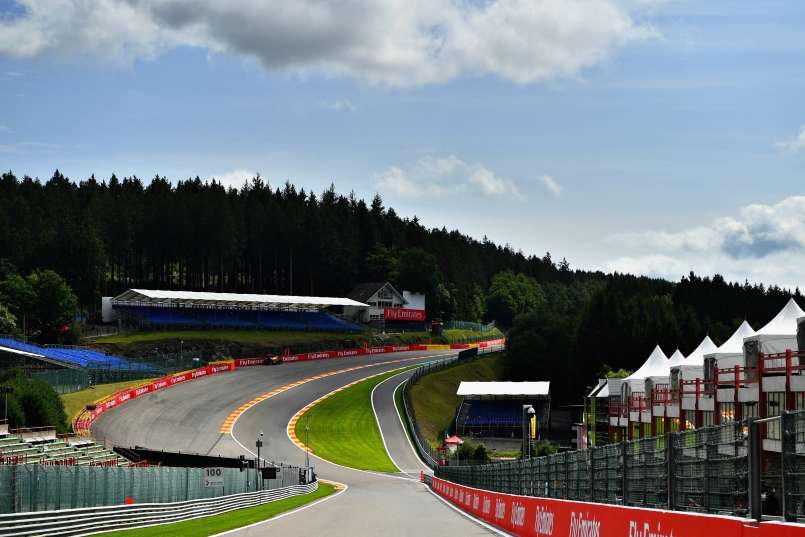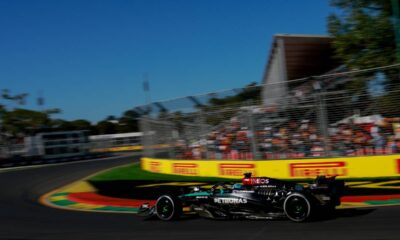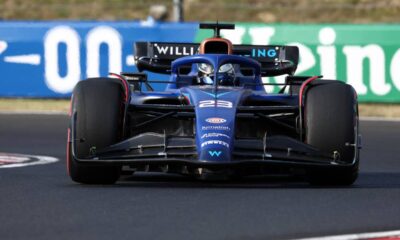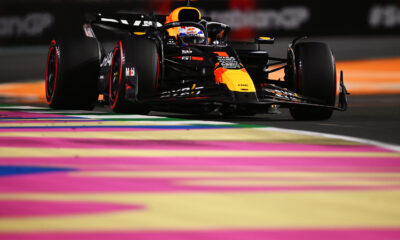Motorsport
History, accidents, traditional destinations. This is the Spa-Francorchamps circuit
The Belgian Grand Prix is one of the most legendary events not only in the Formula 1 calendar. The 7,004-kilometre Spa-Francorchamps circuit (the longest on the F1 calendar) boasts a rich history full of racing, but also less pleasant memories.

The Belgian Grand Prix is one of the most legendary events not only in the Formula 1 calendar. The 7,004-kilometre Spa-Francorchamps circuit (the longest on the F1 calendar) boasts a rich history full of racing, but also less pleasant memories. Let’s take a look together at the story of a track that hosts not only F1 but also endurance races, DTM races and many other events.
The circuit was drawn as early as 1920, and the very next year the first race was to be held on the 15-kilometre circuit. However, at that time only one competitor signed up for the start and the event was cancelled.
In 1922, the first race was held on the track. An endurance car race with an average speed of 89 kilometres per hour brought victory to the Baron of Tornaco-Bruyère. Since then, more than enough has happened at Spa.
The new asphalt and the creation of the famous corner
The first Grand Prix came in 1925, on 28 June. The race, which covered more than 800 kilometres, was won by the Italian Antonio Ascari, followed by his compatriot Giuseppe Campari in second place. Campari’s gap was more than 20 minutes.
The other five starters did not finish at all. For the last 25 laps, only two riders were left on the track. Ascari and Campari were both driving Alfa Romeo monoposts, whose third driver, Gastone Brilli-Peri, retired in the third half of the race after suspension problems.
In 1928, asphalt was put on the track, which consisted of packed dirt, for the first time. But the venue still lacked the place that makes most people familiar with the circuit in Belgium today. The Radillon corner, known to many as Eau Rouge. The seventeen percent rise to the long straight was created in Belgium back in 1939.
It created a place that still commands great respect among riders today. This is because pilots cannot see the top of the corner, which is driven at full throttle and can cause very severe accidents. And there have been no shortage of them in history. The origin of its name can be seen just a short distance from the track. That’s where the Red Water, Eau Rouge in French, flows.
Racing was then interrupted for a while because of the Second World War. Two years after the end of the war, racing resumed at the Belgian circuit and the first appearance of the Queen of Motorsport was fast approaching.
The beginnings of F1
Formula 1 took to the track at Spa in its debut year in 1950. Pole position was taken by future world champion Nino Farina. But the race was won by another motorsport legend. In Belgium, it was the Argentine Juan Manuel Fangio.
A year later, the track was extended to nine metres from the original six metres, not just for Formula One races. Interestingly, it wasn’t until 1963 that safety rails were added to the circuit for the first time. The last time the long circuit was raced was in 1970, after which the queen of motorsport took a thirteen-year break.
Speed record and new length
The fastest man to race around the track was Frenchman Henri Pescarolo in 1973, who completed a lap at an average speed of 262.461 kilometres per hour during training for the “1000 kilometres Francorchamps”. By comparison, Formula 1 runs around 230 kilometres per hour in Belgium.
In the late 1970s, the length of the circuit was radically reduced from fifteen to less than seven kilometres. And in 1983, F1 returned permanently.
In the early 1990s, the European Union banned tobacco companies from sponsoring events and advertising on television. Those who remember will remember, for example, the famous McLaren monocoque that bore the name of a tobacco company.
Politics and bankruptcy = Spa without two races
The Belgian circuit has not been without its troubles in its history either. Due to new tobacco laws, the Belgian Grand Prix was not run in 2003. Nor did it race three years later.
This time the reason was the owner’s bankruptcy. The Walloon Region, as the new owner, did raise the funds then, but too late. The Spa-Francorchamps circuit was not raced again until 2007. Now, Belgium may have to take another break. F1’s top brass want to take the track off the calendar, which would certainly be a great shame.
A tragic end to Anthoine Hubert’s
Unfortunately, 2019 also brought one very unpleasant event. Namely, the talented Frenchman Anthoine Hubert lost control of his monoposto on the exit of Eau Rouge in a Formula 2 race and crashed into the barrier.
After bouncing off it, Juan Manuel Correa crashed into him at full speed and despite the quick work of the rescue team, the Frenchman did not survive the hard impact. Since then, the monoposts have undergone even more stringent safety checks, so fortunately for formula motorsport, we don’t see any casualties.
Such is the story of one of the most legendary places in the motorsport world. A place that commands respect, evokes emotion and draws fans. And a place whose history is a story of obstacles and tragedy.
Source: Spa-Francorchamps, Wikipedia












